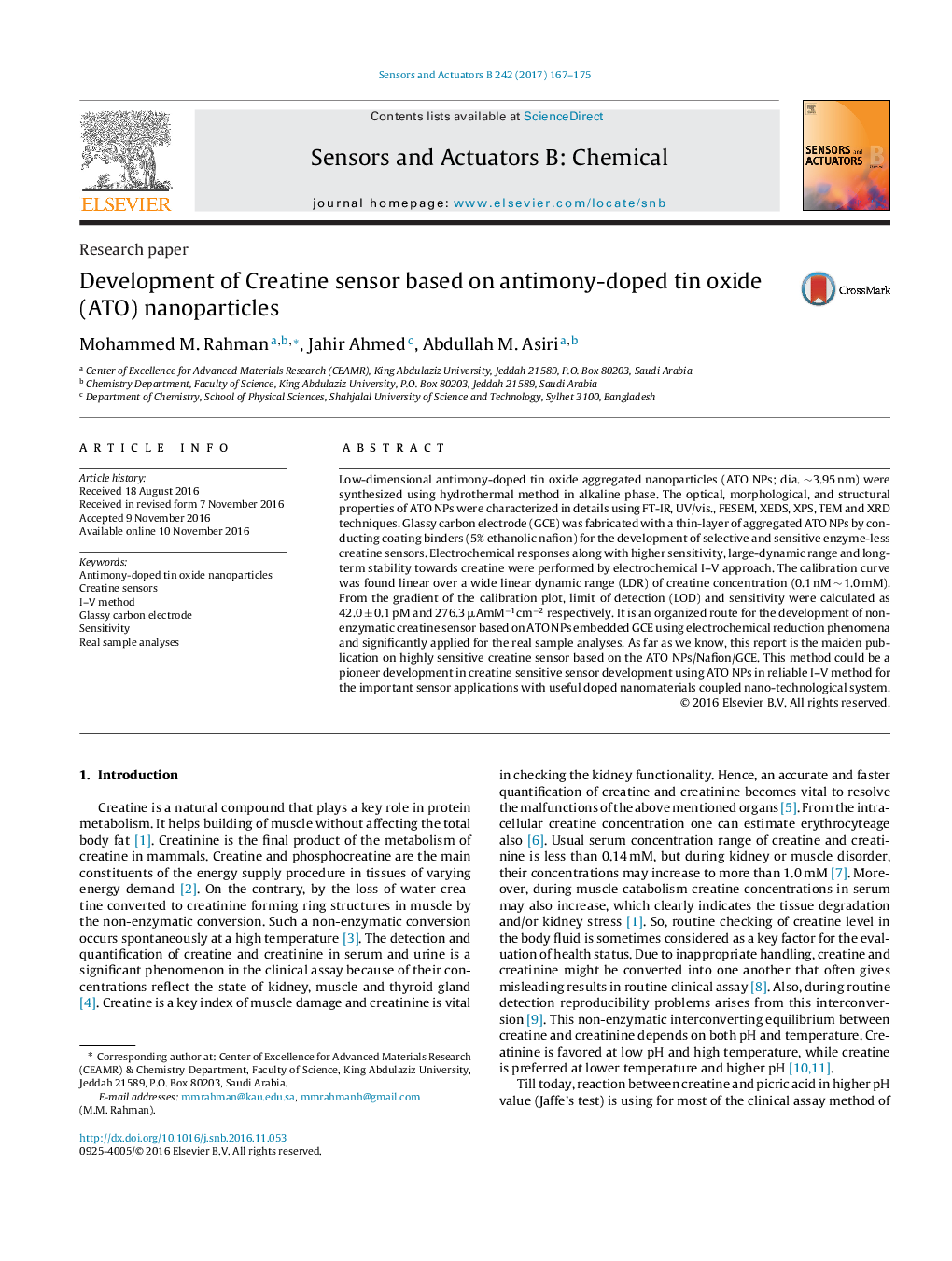| Article ID | Journal | Published Year | Pages | File Type |
|---|---|---|---|---|
| 5009669 | Sensors and Actuators B: Chemical | 2017 | 9 Pages |
â¢ATO nanoparticles prepared by hydrothermal method.â¢Highly sensitive creatine biosensor by I-V method.â¢Sensor exhibits large-linear dynamic ranges.â¢Effective biosensor for biomedical field.
Low-dimensional antimony-doped tin oxide aggregated nanoparticles (ATO NPs; dia. â¼3.95 nm) were synthesized using hydrothermal method in alkaline phase. The optical, morphological, and structural properties of ATO NPs were characterized in details using FT-IR, UV/vis., FESEM, XEDS, XPS, TEM and XRD techniques. Glassy carbon electrode (GCE) was fabricated with a thin-layer of aggregated ATO NPs by conducting coating binders (5% ethanolic nafion) for the development of selective and sensitive enzyme-less creatine sensors. Electrochemical responses along with higher sensitivity, large-dynamic range and long-term stability towards creatine were performed by electrochemical I-V approach. The calibration curve was found linear over a wide linear dynamic range (LDR) of creatine concentration (0.1 nM â¼Â 1.0 mM). From the gradient of the calibration plot, limit of detection (LOD) and sensitivity were calculated as 42.0 ± 0.1 pM and 276.3 μAmMâ1cmâ2 respectively. It is an organized route for the development of non-enzymatic creatine sensor based on ATO NPs embedded GCE using electrochemical reduction phenomena and significantly applied for the real sample analyses. As far as we know, this report is the maiden publication on highly sensitive creatine sensor based on the ATO NPs/Nafion/GCE. This method could be a pioneer development in creatine sensitive sensor development using ATO NPs in reliable I-V method for the important sensor applications with useful doped nanomaterials coupled nano-technological system.
Graphical abstractDownload high-res image (127KB)Download full-size image
